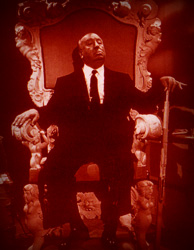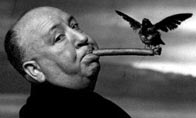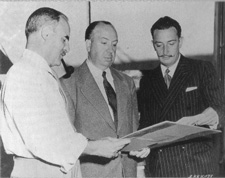









Alfred Hitchcock
was born on August 13, 1899 in Leytonstone, England. His career as a film
maker virtually spanned the existance of film as a medium. Beginning his
film career in 1919, Hitchcock first worked as an illustrator for title
cards for silent films in London. His first full film, The Pleasure
Garden, was completed in 1925, just as film industry was being established.
Hitchcock's break through film, The Lodger (1926), was a prototype
for many future films; the plot consisted of an innocent protagonist being
wrongfully accused of committing a crime and trying to set the record
straight. Completing Jamaica Inn, his last british film in 1939,
Hitchcock moved to Hollywood in 1940 to create Rebecca. Both of
these films were somewhat uncharacteristic of Hitchcock and were both
based on novels by Daphne du Maurier. Hitchcock created his most well
known films between 1950 and 1960, including Rear Window (1954),
Vertigo (1958), North by Northwest (1959), and Psycho
(1960). Family Plot, Hitchcock's final film, was released in 1976,
four years before his death.
Due to Hitchcock’s chosen medium of film, criticism of his work often
deals with the narrative twists and turns that make his films the thrillers
they are. But this type of criticism often ignores a more formal
approach and masks a preoccupation with the visual arts in his films.
This website is devoted to Hitchcock’s relation to the world
of the visual arts, and, more specifically, surrealist art. It is
divided into four main sections, all of which deal with the relationship
between Hitchcock and art:

-The cameos section contains a discussion of Hitchcock's habit of appearing in his films, a list of all of the cameos, and images of several cameos.
-The symbolism section a discussion and some images of important Hitchcockian symbols.
-The contemporary art section contains brief summaries of some contemporary artists who have been inspired by Hitchcock's films.

Hitchcock laid to rest any speculation about his interest in Surrealism when he collaborated with Salvador Dali on Spellbound. Together they created a dream sequence complete with Dali’s unique surrealist style, though most of the scene was cut before Spellbound’s release.
introduction | influences | cameos | symbolism | contemporary art | bibliography